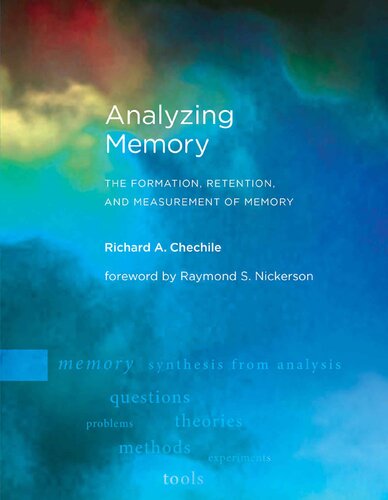

Most ebook files are in PDF format, so you can easily read them using various software such as Foxit Reader or directly on the Google Chrome browser.
Some ebook files are released by publishers in other formats such as .awz, .mobi, .epub, .fb2, etc. You may need to install specific software to read these formats on mobile/PC, such as Calibre.
Please read the tutorial at this link: https://ebookbell.com/faq
We offer FREE conversion to the popular formats you request; however, this may take some time. Therefore, right after payment, please email us, and we will try to provide the service as quickly as possible.
For some exceptional file formats or broken links (if any), please refrain from opening any disputes. Instead, email us first, and we will try to assist within a maximum of 6 hours.
EbookBell Team

5.0
20 reviewsAn accessible synthesis of memory research that discusses the creation of memory representations, the processes of storage and retrieval, and the effectiveness of encoding information.
The field of memory research is subdivided into many separate and non-overlapping topic areas that often employ specialized tools and models. This book offers an accessible synthesis of memory research that explores how memory works, how it is organized, and how it changes dynamically. Written by an expert in the field, it can be used by undergraduate and graduate students of psychology and as a reference by researchers who want to fill in gaps in their knowledge. The book focuses on three general topics that cover a vast amount of research in the field: how a memory representation is created, how the cognitive processes of storage and retrieval can be studied and measured, and the process of encoding information and its varying degrees of effectiveness.
Specific subjects addressed include habituation and sensitization, and the neurobiological changes that underlie them; evidence for a cognitive component underlying Pavlovian conditioning; biological constraints on a cognitive model of memory; an information-processing framework for memory; misconceptions about memory, including the static memory myth and the permanent memory myth; model-based measurement of storage and retrieval processes; a critique of the concept of memory strength; the distinction between implicit and explicit memory; and learning and repetition.
Although the writing is accessible to the nonspecialist, the density of information is high. The text avoids jargon, and a glossary defines key terms. The notes expand on technical details and point to interesting related ideas.